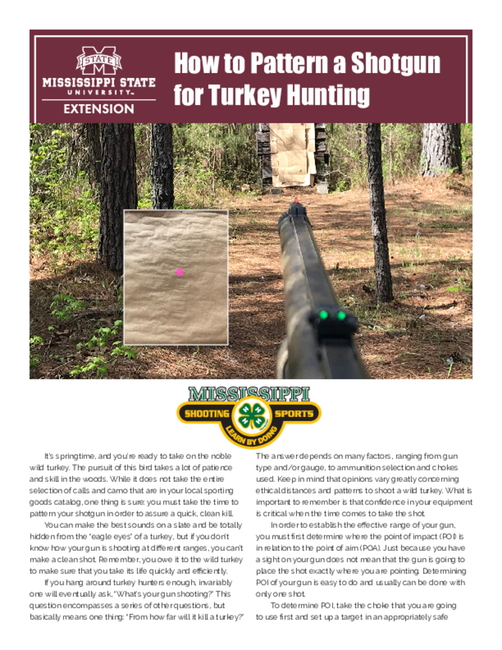How to Pattern a Shotgun for Turkey Hunting
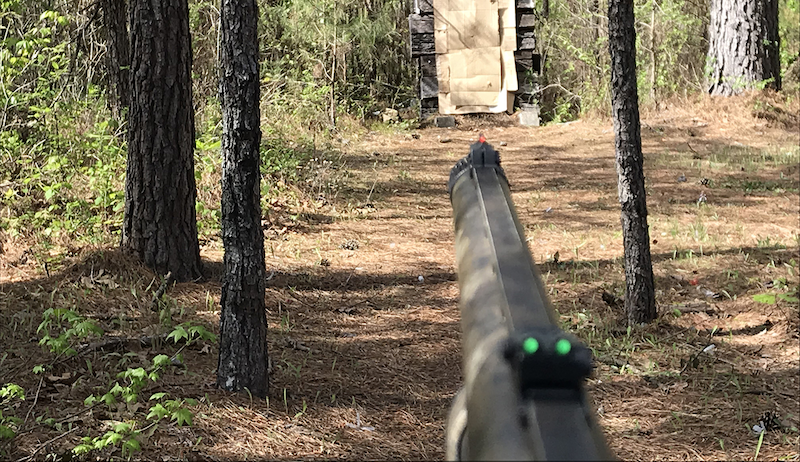
It’s springtime, and you’re ready to take on the noble wild turkey. The pursuit of this bird takes a lot of patience and skill in the woods. While it does not take the entire selection of calls and camo that are in your local sporting goods catalog, one thing is sure: you must take the time to pattern your shotgun in order to assure a quick, clean kill.
You can make the best sounds on a slate and be totally hidden from the “eagle eyes” of a turkey, but if you don’t know how your gun is shooting at different ranges, you can’t make a clean shot. Remember, you owe it to the wild turkey to make sure that you take its life quickly and efficiently.
If you hang around turkey hunters enough, invariably one will eventually ask, “What’s your gun shooting?” This question encompasses a series of other questions, but basically means one thing: “From how far will it kill a turkey?” The answer depends on many factors, ranging from gun type and/or gauge, to ammunition selection and chokes used. Keep in mind that opinions vary greatly concerning ethical distances and patterns to shoot a wild turkey. What is important to remember is that confidence in your equipment is critical when the time comes to take the shot.
In order to establish the effective range of your gun, you must first determine where the point of impact (POI) is in relation to the point of aim (POA). Just because you have a sight on your gun does not mean that the gun is going to place the shot exactly where you are pointing. Determining POI of your gun is easy to do and usually can be done with only one shot.
To determine POI, take the choke that you are going to use first and set up a target in an appropriately safe area at approximately 20 yards. If you are interested in a more detailed look at how shotgun chokes work, see MSU Extension Publication 2982 Know Your Spread: The Importance of Patterning Your Shotgun.
A great material for target practice is a roll of brown wrapping paper. With this roll, you can cut several 3-by-3-foot pieces to serve as targets. Next, find the center point of the paper and place an aiming point on it. This could be anything from a spray-painted dot to a florescent sticker.
The main purpose of this exercise is not accuracy but to see how POA and POI relate to each other. For this initial test, it is not necessary to use your turkey hunting loads; a simple, light 1- to 1 1/8-ounce target load will be just fine. The shot will be close enough to imprint a bulk of the pattern in one area of the paper, which is what you want.
The type of choke/shot shell that you use may or may not impact the POI. Endless combinations of these can be configured with an infinite number of outcomes. One thing to keep in mind is not to be too critical, as you can really get wrapped up and throw out good results in search of the “perfect pattern.”
Lay out the chokes you are going to experiment with, and determine the choke you are going to try first. If you look online, you can find some excellent sources for a starting point for the choke to try with your gun. One such source is www.oldgobbler.com, which has a section dedicated to pictures of targets that members have shot and posted along with distance, choke/shot shell combination, and pellet count.
Next, lay out the different shot shells in the order that you are going to try them. Keep the boxes next to the shells so you can remember which target goes with which shell. Remember to mark the target post-shot with the shell used and distance so you can keep track of them once you begin to examine the results. If you are going to be trying multiple chokes, also write down which choke you are using.
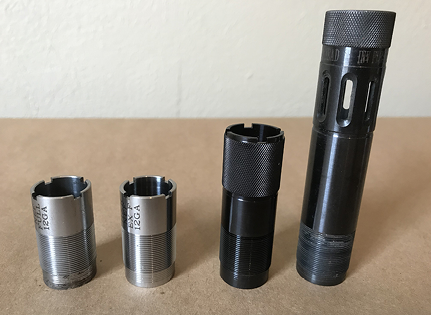
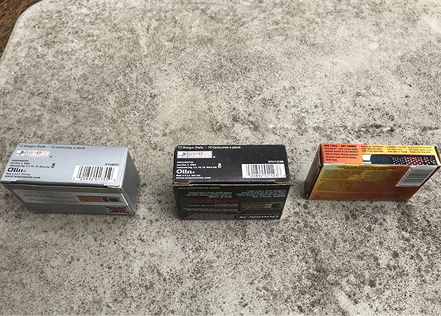
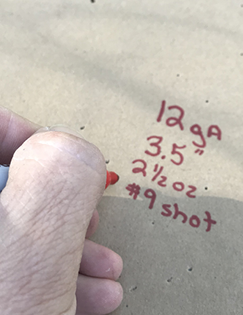
Figure 1a-1c. Lay out the chokes you intend to use, as well as the different shot shells you plan to practice with. Mark the target post-shot with the shell used, distance, and any other important information.
While POI shooting involves a center-of-the-paper POA, there are several “turkey head” targets on the market. All of these are acceptable but not necessary. A neck and head area can be drawn easily using a tracing of your arm starting with the elbow and moving upward to include your closed fist. Or you may simply draw a center aiming point.
You can choose any shooting position, but make sure you use the same position for all of the shots to ensure consistency in the patterning results. Some people like to shoot leaned up against a tree as they would be while hunting. The most stable method is to shoot off of a table while seated using shooting bags or a range sled. A standard distance among turkey hunters to test turkey loads is 40 yards.
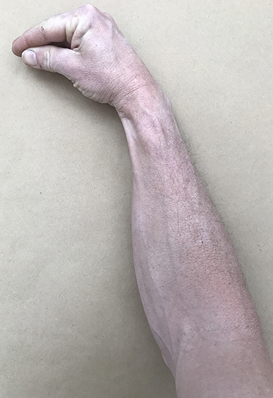
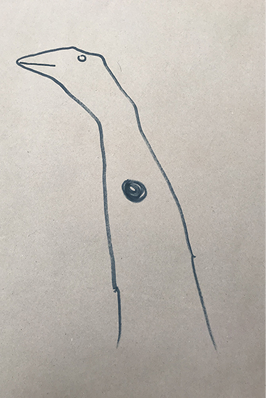
Figure 2a-2b. Use your arm to create a turkey head, and mark the target area for a quick, clean kill.
Once you have the target set, put your eye and ear protection on. Take a seat and begin shooting each load. Take aim at the center of the target and squeeze the shot off. Every shot in this exercise should be done in this manner. Turkey hunting mainly involves shooting at a relatively stationary target, so pulling the trigger as in wing shooting is not desirable.
Be sure to record shell type and distance and place them in a stack. Once you have finished with the shell/choke combinations that you are wanting to try, take the targets and move to a flat surface to examine how each shell performed.
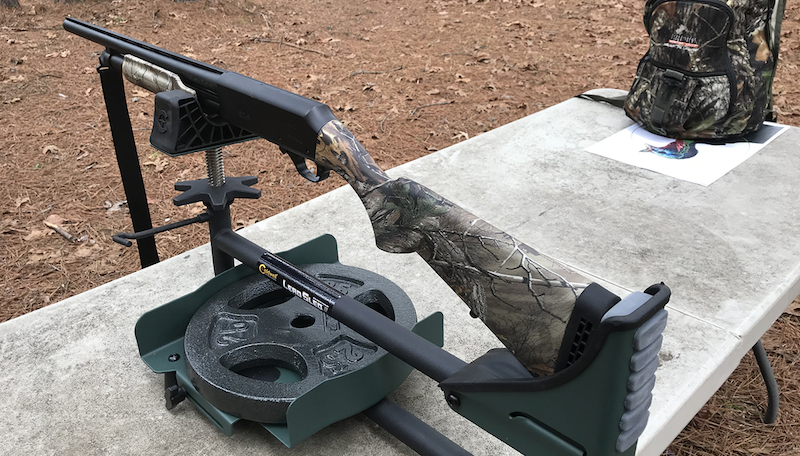
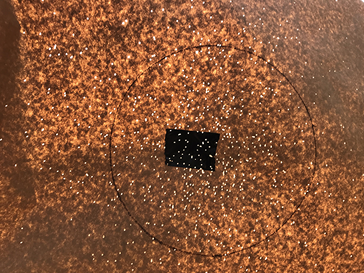
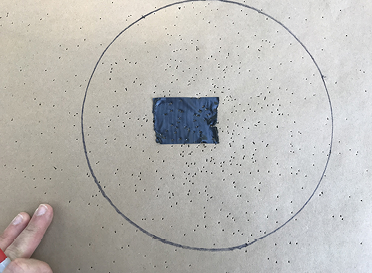
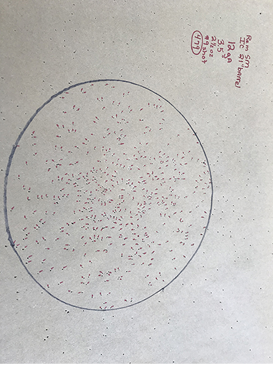
Figure 3a-3d. A standard “acceptable” pellet count in a 10-inch circle at 40 yards is 100 holes.
A standard “acceptable” pellet count in a 10-inch circle at 40 yards is 100 holes. Again, view this as a general rule of thumb and not a requirement. You must consider distribution of pellets, size of pellets, load of shell, and so on. For instance, larger pellet sizes such as #4 shot carry much more energy and take fewer on-target in order to be effective. Smaller pellet sizes such as #6 shot have less energy and require more on-target to achieve the desired result. The more research you do, the more opinions you will find on what is the “right” pattern.
Another recognized standard is to look for the greatest pellet density within a 10-inch circle. Depending on the POI of the shot load, the bulk of the pellets may not be directly in the center of the target. First, hold the target against a light. Through the target, you will be able to see the concentration of pellet holes in the paper. Lay the target down and draw a 10-inch circle around the heaviest part of the pattern. Once you have this area drawn, take a pen and begin circling the pellet holes, mentally counting the number within the circle. Once you have finished, write the total at the top of the paper.
When turkey hunting, remember: know the capabilities of your gun, and only take shots when you know that your gun can and will kill the turkey quickly and cleanly. Don’t take shots that are beyond a reasonable range.
The information given here is for educational purposes only. References to commercial products, trade names, or suppliers are made with the understanding that no endorsement is implied and that no discrimination against other products or suppliers is intended.
Publication 3234 (POD-05-22)
Prepared by MSU Extension Center for 4-H Youth Development.
